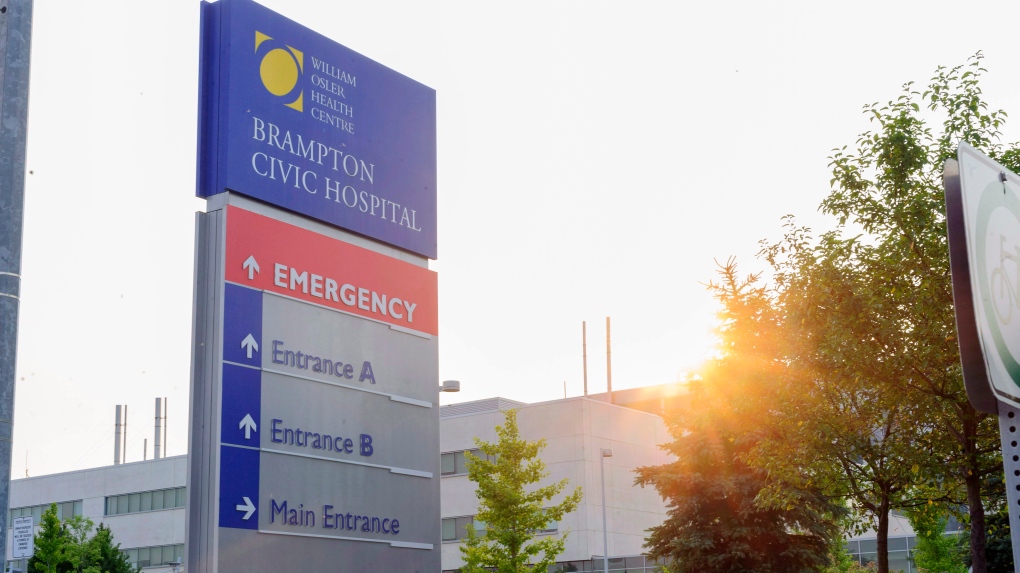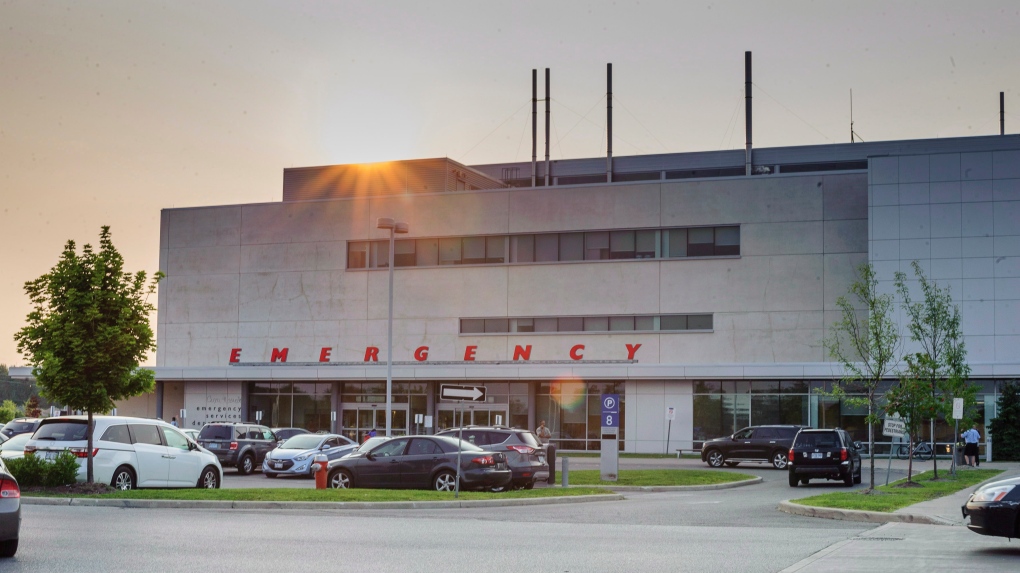There's always been a hospital capacity problem in Brampton. COVID-19 made it worse
When Brampton Civic Hospital first opened in 2007, the facility was built to see 90,000 patients per year. Before COVID-19 even made its way to Ontario in 2020, the hospital saw more than 130,000 patients on an annual basis.
“When the pandemic hit it was almost like ‘can it get any worse?’” Brampton City Councillor Harkirat Singh told CTV News Toronto. “We were already in a dire situation with only one fully-functional hospital for all the residents of Brampton.”
The city’s population has experienced explosive growth over the last 20 to 30 years.
Census records show that in 2006, some 433,000 people called the city home. Fast forward a decade, and the most recent census data from 2016 shows that the population has since jumped significantly to 593,638.
The problem, according to public health leaders working in the city, is that population growth has outpaced funding for its health-care network.
“We are the lowest funded per capita public health unit in the province of Ontario,” Peel Region’s Medical Officer of Health Dr. Lawrence Loh said.
“These inequities have really challenged all of us who have been practicing with the public health unit, and certainly health-care providers throughout the community, as a result of significant disparities that existed before COVID-19 even arrived.”
Kiki Ferrari, chief operating officer at William Osler Health System, which oversees operations at Brampton Civic, said that the hospital is often at full occupancy and could be considered one of the busiest emergency departments in Canada.
“Just at the Brampton Civic site alone, we can see over 400 patients in a day. In terms of patient flow, we’re admitting up to 60 patients every day through our emergency department,” Ferrari explained.

In fact, during CTV News Toronto’s interview with Ferrari, an extreme code gridlock was declared over the loudspeaker at the hospital. The declaration means that the hospital’s ability to provide care is outpaced by demand.
When that happens, Ferrari says that a patient may be moved to a hallway or to any other surge space to accommodate the influx.
“We’ve had issues with capacity in the past and it’s a very complicated issue. We’ve been growing as a population in the region and that has played a significant role in our own growth as an organization,” she said.
William Osler made headlines earlier this month when it declared a code orange to address its hospital capacity and staffing challenges. The temporary move -- which ended two days after it was declared -- saw patients transferred to neighbouring hospitals to free up capacity.
Three days before the first case of COVID-19 case was reported in Canada on Jan. 25, 2020, Singh proactively put forward a motion to Brampton City Council which declared a health-care emergency to push funds and resources to the city’s beleaguered health-care system.
“We were already handicapped in addressing COVID-19,” Singh said. “We worked together, all levels of government came together, and we’ve been trying to make the best out of a difficult situation."
In March of last year, Premier Doug Ford announced an expansion of the Peel Memorial Centre for Integrated Health and Wellness with a plan in place to develop a 24/7 inpatient hospital and urgent care centre, an eventual emergency department and 250 specialized beds.
But even with that investment, the number of available hospital beds in Brampton is still below the provincial average. According to Mayor Patrick Brown, the average number of hospital beds in Ontario per 1,000 people is 2.16. In Brampton, it’s .96.
For Dr. Loh, he says that more investments need to be made now to provide long-term support Ontario’s fragile health-care system.
“If we are able to take a holistic view of health and really address some of the disparities, inequities that exist between some of our different ethno-culture and socioeconomic groups within our community you can actually forestall health-care demand in the longer run.”
With files from Rahim Ladhani

CTVNews.ca Top Stories

Outdated cancer screening guidelines jeopardizing early detection, doctors say
A group of doctors say Canadian cancer screening guidelines set by a national task force are out-of-date and putting people at risk because their cancers aren't detected early enough.
Mussolini's wartime bunker opens to the public in Rome
After its last closure in 2021, it has now reopened for guided tours of the air raid shelter and the bunker. The complex now includes a multimedia exhibition about Rome during World War II, air raid systems for civilians, and the series of 51 Allied bombings that pummeled the city between July 1943 and May 1944.
'I just started crying': Blue Jays player signs jersey for man in hospital
An Ontario woman says she never expected to be gifted a Blue Jays jersey for her ailing husband when she sat alone at the team’s home opener next to a couple of kind strangers.
LIVE @ 4 EDT Freeland to present 2024 federal budget, promising billions in new spending
Canadians will learn Tuesday the entirety of the federal Liberal government's new spending plans, and how they intend to pay for them, when Deputy Prime Minister and Finance Minister Chrystia Freeland tables the 2024 federal budget.
B.C. woman facing steep medical bills, uncertain future after Thailand crash
The family of a Victoria, B.C., woman who was seriously injured in an accident in Thailand is pleading for help as medical bills pile up.
Step inside 'The Brain': Northern education tool aims to promote drug safety
An immersive experience inside a massive dome coined 'The Brain' is helping youth learn about brain function and addiction
WATCH Half of Canadians living paycheque-to-paycheque: Equifax
As Canadians deal with a crushing housing shortage, high rental prices and inflationary price pressures, now Equifax Canada is warning that Canadian consumers are increasingly under stress"from the surging cost of living.
Ontario woman charged almost $7,000 for 20-minute taxi ride abroad
An Ontario woman was shocked to find she’d been charged nearly $7,000 after unknowingly using an unauthorized taxi company while on vacation in January.
Inmate who escaped from N.B. prison has long history of violent crimes
An inmate who escaped from Dorchester Penitentiary in Dorchester, N.B., on Saturday evening has a long history of violent crimes and a history of escaping custody.

































